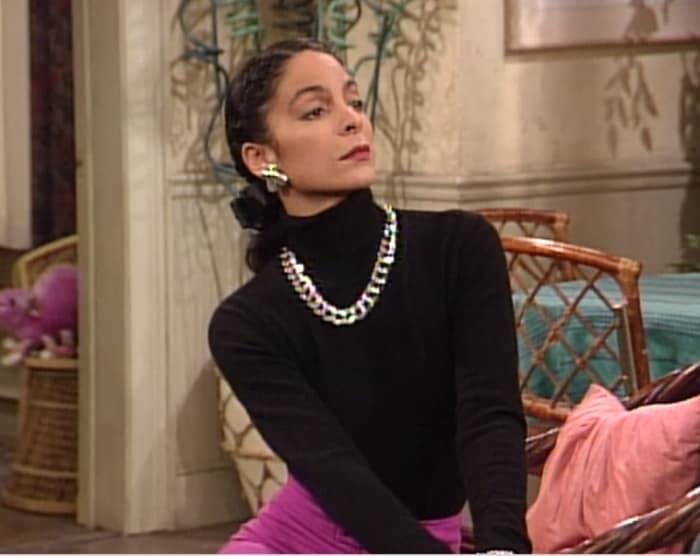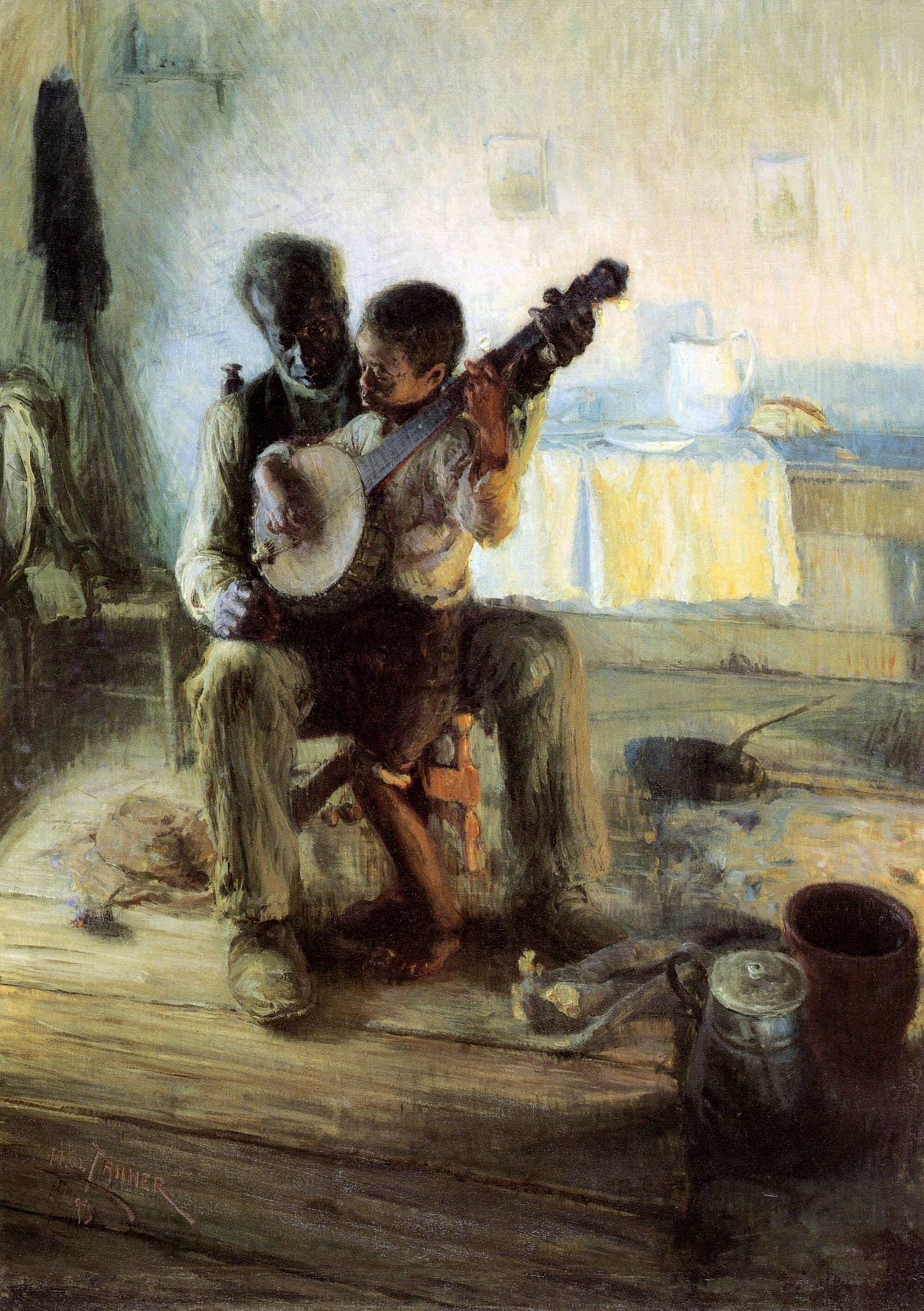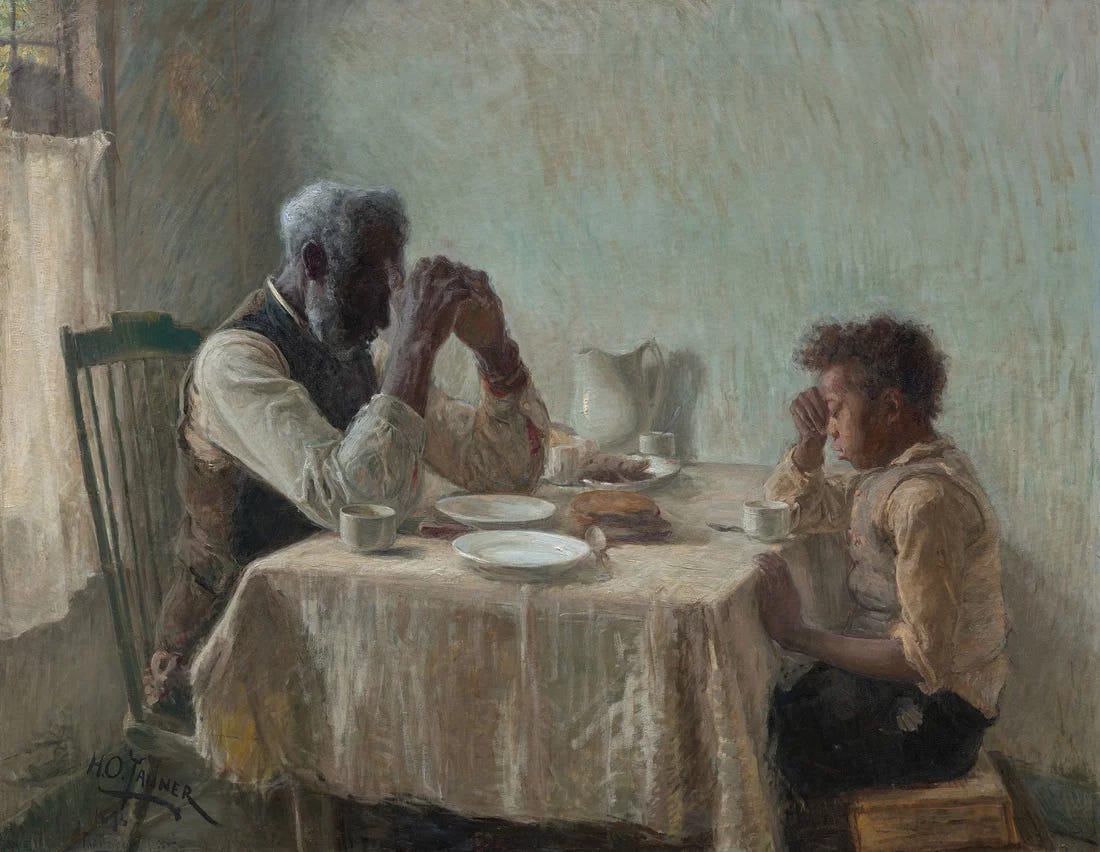The Artist A Different World Introduced Me To: Uncovering the Lost Legacy of Henry Ossawa Tanner
How a 90s TV Show Led Me to Discover One of the Most Important, Yet Overlooked, Black Artists in History
Let's be honest: the art world loves to shout from mountaintops about its so-called "masters," but that noise suddenly becomes a faint whisper regarding Black artists. That's where Lost Voices of Black Art comes in—it's high time we amp up those voices, starting with Henry Ossawa Tanner.
Henry who? Exactly. Tanner was a trailblazer, a Black man painting in the late 19th and early 20th centuries when the art world didn't just overlook Black artists—they actively shut them out. But Tanner wasn't here for the nonsense. He carved out his space and left a legacy way too powerful to be forgotten.
A Different World, A Different Perspective
The first time I heard the name, Henry Ossawa Tanner, it wasn’t in an art history class or a museum—it was on an episode of A Different World. Whitley was either being interviewed, or it was her first day at her internship at an art buying firm, and when she mentioned that Tanner was her favorite artist, I remember thinking, ‘Who’s that?’ Although I was young when it originally aired, when I got older and rewatched the reruns, I always remembered Whitley, her love of art, and the name Henry O. Tanner. Little did I know I was about to dive into the story of one of the most overlooked visionaries in art history.
Read my piece on my love for Whitley Gilbert:
Finding Whitley: How A Different World’s Art History Major Shaped My Journey
When I first met Whitley Gilbert from A Different World, I was hooked. She had this confidence, grace, and Southern charm that made her shine in every scene. Yeah, her outfits were on point, and her quick comebacks were iconic, but what stuck with me was her choice to major in art history. At the time, I didn’t fully get it—why would this glamorous Blac…
From Philly to Paris: The Making of a Master
Tanner was born in 1859 in Pittsburgh, but Philly was where he started making moves. His father was a bishop in the African Methodist Episcopal Church, and his mom was an enslaved woman who broke free via the Underground Railroad. Now, could you talk about legacy? Such heritage instilled in Tanner a sense of purpose that shines through in his art.
He contracted the art bug young; at 21, he entered the Pennsylvania Academy of the Fine Arts, studying under Thomas Eakins, the big deal in the American scene. But let us not get it twisted—Tanner had to deal with everyday racism as the only black student in the mix. That's probably why Tanner took his talents to Paris in 1891 after a rough start in the States. And thank God he did.
The Art: Faith, Light, and Blackness
Tanner's work is straight-up stunning. He is most famous for his religious paintings—think ethereal, aglow scenes that make you feel you're standing in a beam of heavenly light. Probably his most well-known work is The Banjo Lesson of 1893, and if you haven't seen it, stop reading this now and look it up. It's such a beautiful, tender moment of an elderly Black man teaching a young boy to play the banjo. Still, it represents much more than that—it is a statement on Black culture, dignity, and the passing down of tradition.
In Paris, Tanner found freedom for himself in spiritual expression through his works, without being restrained by racial restraints, so to speak, that he often felt back in the United States.
Why He's a Lost Voice
So why isn't Tanner a household name, like Van Gogh or Monet? Be real: systemic racism. Even following his success in Paris as the first Black artist of international renown, Tanner's work continued to be overlooked by American institutions just because he was black. The art world does have a way of "forgetting" black excellence—and Tanner was no exception.
But here's the thing: just because they tried burying his legacy doesn't mean it disappeared. Tanner's work is having a moment, and museums are finally doing right by him—giving him the recognition he earned long ago. His influence on later generations of Black artists isn't up for debate: he proved you could be a master of your craft and unapologetically Black, no matter what the world said.
Why Tanner Still Matters
Henry Ossawa Tanner was not just painting pictures; he was painting narratives. His works were those of resilience, faith, and beauty in Black culture. In a world still trying to box our identity up, Tanner's art kicks that box to the curb. But he didn't stop there. He showed the way for so many Black artists after him that our stories deserve to be told in all their glory.
If you've never seen Tanner's work, now's the time. Go. Get inspired. Remember: we're here to ensure voices like his never get lost again.
Further Reading on Henry Ossawa Tanner
Smithsonian American Art Museum
Henry Ossawa Tanner (1859-1937):The Metropolitan Museum of Art
Heilbrunn Timeline of Art History: Henry Ossawa Tanner:The Pennsylvania Academy of Fine Arts
The Art and Legacy of Henry Ossawa Tanner:Tanner’s Most Famous Work: "The Banjo Lesson"
Crystal Bridges Museum of American Art: The Banjo Lesson:PBS: The Legacy of Henry Ossawa Tanner
African American Masters: Henry Ossawa Tanner:Tanner’s Influence in Paris
The Henry Ossawa Tanner House Project:







